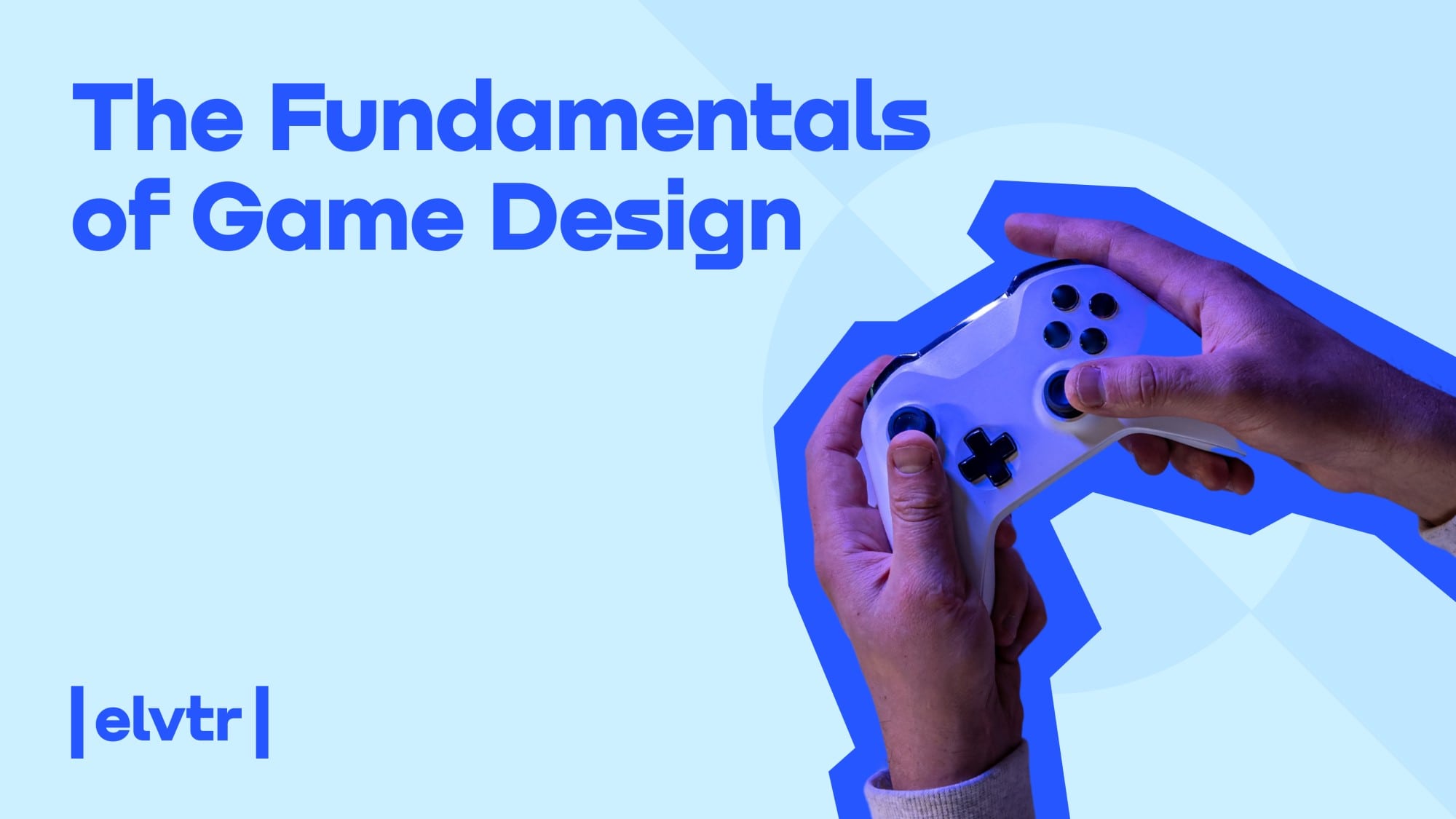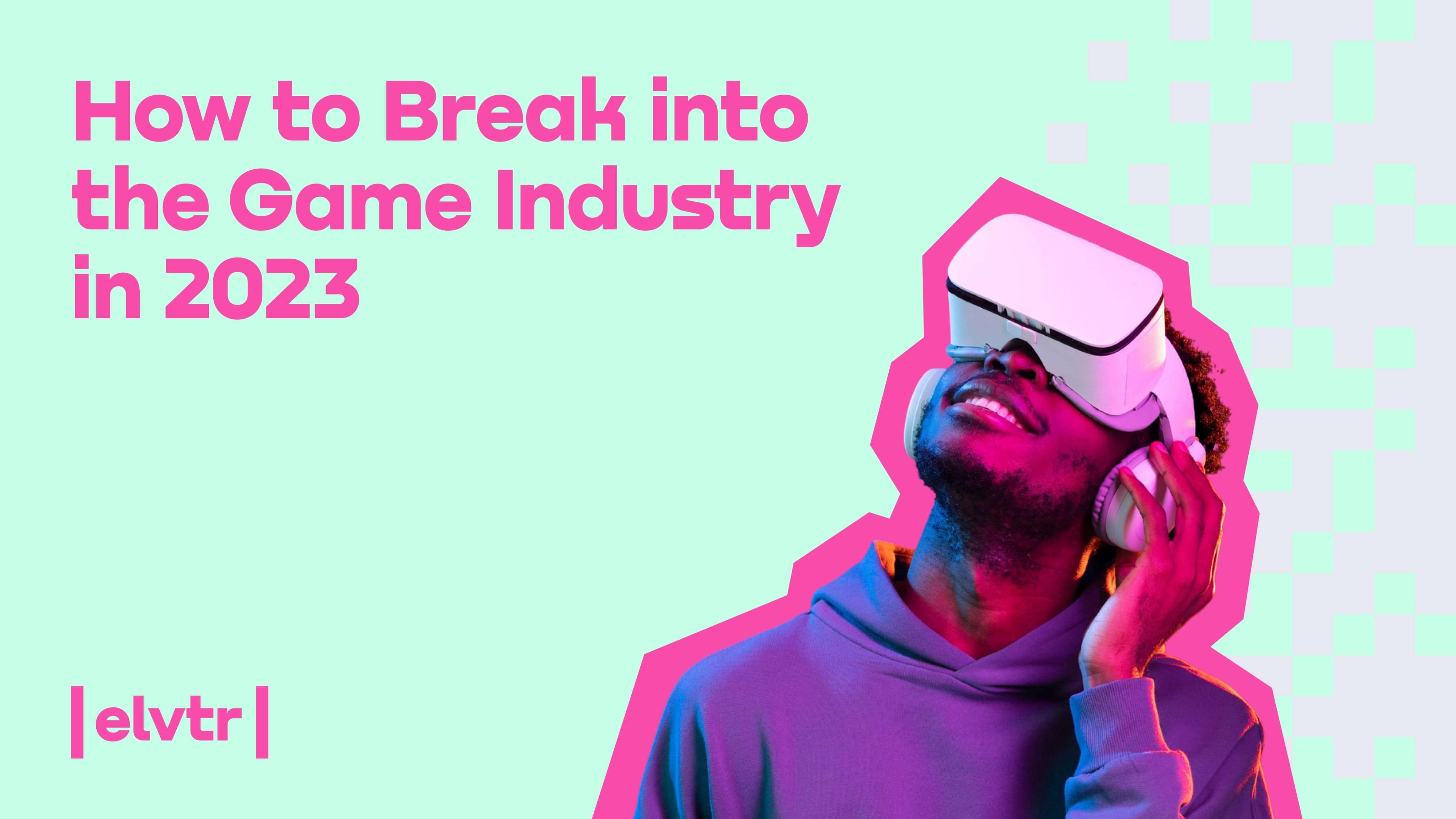- MAIN PAGE
- – elvtr magazine – ADAM LISS: “THE KEY TO BECOMING A GREAT AR/VR DESIGNER? EMPATHY!”
ADAM LISS: “THE KEY TO BECOMING A GREAT AR/VR DESIGNER? EMPATHY!”

In a relatively young industry such as AR/VR design, Adam Liss is one of the rare practitioners who can claim to be a battle-hardened veteran. A former senior UX designer at Amazon, the American technologist has explored various commercial uses of this exciting technology, from gaming and e-commerce to virtual learning solutions.
In the following paragraphs, Adam unveils the secrets of this up-and-coming profession, starting with six tips on what it takes to be a rockstar AR/VR designer and how his ELVTR course will help you get there. He also explains what the future holds for an industry most recently revolutionized by the Apple Vision Pro headset.
So why should someone become an AR/VR designer?
XR (Extended Reality) is one of those things that feels inevitable to become a part of everyday life. The three dimensional, natural interaction is something you have to try to understand how powerful it is.
Headsets are getting smaller and cheaper. They allow you to do things that you can’t do with any other device, things that feel natural and effortless. We're still in the early days of XR, but it has a long future ahead. Now is an exciting time to learn about it, since most of the rules haven't been put in place and people are trying to figure out what the best practices are.
What sort of advice would you give to an aspiring AR/VR designer?
- Empathy is important
User experience design doesn’t require maths or specialized technical skills. All it requires is an interest in creating good experiences for people, being able to empathize with them and understanding their challenges. At the same time, it’s important to understand the technology you work with and how it can address those challenges.
- You don’t need programming skills, but they are useful
There are different types of AR/VR designers that might be a better fit depending on your background and interests. There's an overlap between UI and UX design, so if you are a visually artistic person, you could focus on creating visual interfaces. The course will cover the 3D modeling tool Blender, so you can get started building 3D interfaces for XR.
VR is still so new that often you might have an idea without knowing if it's going to work or not and the best way to test it is to try building it. So if you have a technical background, you can focus more on prototyping and rapid development.
The course won't require any coding, but we’ll cover the basics of programming, since it’s important to understand the tools that engineers use to build these experiences to know what's possible.
We are going to dive deep into the Unity game engine. It’s an incredibly powerful tool, but it’s a fairly visual interface with a lot of drag and drop, so that makes it easier to get up and running creating XR content. Then we will go into game logic and programming.
I like to code myself, but Unity has tools that let you create experiences without coding. I've worked with people who have done amazing projects without writing a line of code. However, not everyone needs to bother with creating interactivity. Many designers can just work on the designs and the documentation, while engineers do the coding.
- It’s design, but with an extra dimension
The design basics are similar to any other sort of design where you build a solution that helps people do some task. But XR is different from 2D design and there are many questions that are introduced by adding this third dimension.
You're interacting with things fundamentally differently from how you would on a computer. Even if you have a background in design, understanding the XR tools is important. Also understanding the problem of space and the new challenges and opportunities that go with a third dimension.
- You need a spatial mindset
There's a lot of overlap between AR and VR. Both require a spatial mindset: thinking about how information and objects exist in spatial relationship to each other. It's not just 2D design where something is on top or bottom. Things can be in front of each other, attached to your head, interacting with each other… So looking at other applications and use cases and starting to develop the spatial way of thinking is an important skill.
- VR is all about immersion, AR about practical uses
VR is more about immersion, storytelling, and creating experiences. One of its superpowers is the level of immersion it creates. Understanding how that technology can facilitate storytelling and immersion is important.
AR is more focused on practical applications. You are meant to take AR out into the world with you. Thinking of how to place this digital overlay on the real world and what’s meaningful information, how would I want to interact with it while being in the real world? That's a unique challenge.
- Being an AR/VR designer is all about turning ideas into action
Regarding soft skills, it’s important to know how to present an idea. That's one of the biggest lessons I've learned during my career as an AR/VR designer. If you can't explain how your idea will work, it's not worth much.
We will go over the process of creating design documentation and using software called Figma to put together a design document. Also how to present these ideas to others and take feedback.
A designer's job is to own the vision for a project. That doesn't necessarily mean being the person who came up with all the ideas. It means understanding what your engineers and artists need to do and creating this vision that you and your team have built up. There's a combination of soft and hard skills in that, producing documents that people can use and refer to.
What’s special about social VR?
One of VR’s superpowers is body language. Everyone is used to meeting on Zoom and you get a little square of someone's head. But you can't point at something. In the real world, you could all meet around a whiteboard and point to it. On Teams or Zoom you can’t do that, you can’t gesture and turn your head to make eye contact.
From a business perspective, there is value in being able to communicate using body language. That extends to games and other social experiences.
If you play games on your computer, you're limited in how you can express yourself. You can use voice chat or do a little dance. But that's as complex as it gets. With VR, you can wave to people, shake hands, throw somebody an object, and interact in ways that aren't possible on a computer.
What has been your most mind-blowing experience with AR/VR?
The first time I used VR. I went to an early demo of the Vive headset before it was released. They had me put on the headset, and then they handed me the controller.
Just the fact that while wearing this headset you're completely in this virtual world. But the tracking is so accurate that somebody hands you a controller and you can just grab it, you know instinctively where it is.
More recently, I've been playing Tetris Effect. Tetris has been out for 30-40 years, but in VR it’s really good. They do a lot of stuff beyond just regular Tetris. But that's pretty mind-blowing.
YOU WOULD LIKE THIS ARTICLE:

The Fundamentals of Game Design
Brainstorm, create, manage, and optimize without losing your creative spark.
What have you learned about XR at Amazon?
It was an experimental role. They are a forward-thinking company, looking a few years forward into things they might want to get into. Τhey see the value in XR.
XR experimentation started with smaller companies and independent developers, but now it is getting to the point where companies like Amazon and Apple see that there's interest. Use cases are starting to become possible due to technological advances. So it was an exciting time to be working there.
XR touches on a lot of different fields. It has optical components, rendering and processing components, as well as an interaction and software layer. What's cool about working at a company like Amazon is that you have people who are at the top of their field in all those areas.
We would work with other teams who were working on non-XR specific projects, but we could use their discoveries to improve our products. Being at a company that has experts in so many fields is beneficial for developing something like XR.
How will AR/VR revolutionize e-commerce?
For a long time people talked about virtual clothes try-ons. This idea keeps coming up, because trying on a product at home makes sense. The reason it hasn't caught on is the technology hasn't been there yet in terms of the hardware, but also the software and experience design.
The computer vision part of the technology is more or less there, but then you get into this question of how do I view this? Do I have to hold my phone up to a mirror? That's the spatial mindset. It's a cool idea, but you need to think through how somebody can do this.
As the technology gets better, you will start seeing some solutions like the Apple Vision Pro. That's a good use case for it. It has high-quality visuals and a small form factor. Previously, you had to hold up your phone and point it at your feet to see what virtual shoes would look like. With Vision Pro, all you need to do is look down.
The hardware needs to get to a point where it's comfortable and easy to use. But as it does, it opens the world for software designers to ask how to make that experience seamless so that people want to use it. If there is a long setup process or doesn't work half the time, people will not use it.
YOU WOULD LIKE THIS ARTICLE:

How to Break into the Game Industry in 2023
The game industry is not only about children’s entertainment anymore.
What do you think about Apple Vision Pro? Is it revolutionary?
In many ways, it’s the Holy Grail people have been looking for. The only downside is the price. If it does what they're saying it does, I could see it changing many things. Just the fact that it can create virtual monitors is potentially revolutionary.
I'm sitting at my desk and I have a laptop and a second monitor. If I could replace it with just this one headset that gives me two or three monitors, and I could take those monitors with me, go downstairs and work from the living room… It'll introduce new ways of working, not to mention the fact that you could still play all the VR games.
Some of the stuff Apple is doing with video conferencing is pretty cool too. They have this face scanning technology so that you can have video calls while still wearing the headset.
When an Apple product first comes out you can't quite see what it's for. When the Apple Watch or the iPad first came out, people wondered why they would need them. But because their products are just so well designed, once people live with them for a while, they start to find their place.
The iPad is the perfect example. Everyone thought it was too big and you couldn't take it with you. But because it’s bigger than a phone but smaller than a computer, it was the perfect size to use while lying down and it found this niche as something that you keep next to your couch. It wasn’t necessarily designed for that, but they made a quality product that had a good form factor and people figured out how to use it.
What books would you recommend to an aspiring AR/VR designer?
I would recommend a book by Jesse Schell, one of the early VR developers who worked on the “I expect you to die” games. It's called “The Art of Game Design, a Book of Lenses.” Even if you're not working on games, it has a lot of good stuff about the design process.
There's also a recent book called “Hyperreality: The Art of Designing Impossible Experiences” by Curtis Hickman, one of the creators of the Void, a location-based VR company. I had the opportunity to go through one of their experiences and it's mind-blowing stuff. Both Hickman and Jesse Schell come from the world of magic and circus performing. XR brings in a lot of people from different industries.
*ELVTR is disrupting education by putting proven industry leaders in a virtual classroom with eager rising stars. ELVTR courses offer 100% instructor driven content designed to give you practical knowledge within a convenient time frame. Choose the right course for you!


